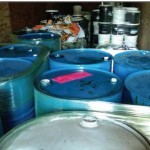As a training provider, I deliver information about the regulations of the PHMSA/USDOT and the USEPA to those in affected industries. This includes anyone who generates a hazardous waste and/or transports or offers for transport a hazardous waste. I have struggled to arrive at a fair cost for my services; one that makes me money, is competitive with my peers, and is fair to anyone needing my training. However, someone seeking regulatory compliance training may not be able to afford my services at any price. That’s where grant money and funding opportunities from Federal and State agencies come in.
A significant source of funding for training is available through the Workforce Investment Act (WIA). The WIA is intended to help Americans manage their careers through information and to help U.S. companies find skilled workers. Among many other features, the WIA provides funding to eligible persons who wish to receive training that will increase their chances of finding employment. Eligibility is based on many factors, including the type of training, and will vary depending on the state or region administering the WIA funds; however, eligibility criteria will usually include low-income workers.
Another source of funds for a person seeking training is available through the Trade Adjustment Assistance (TAA) Program. Eligible persons are those whose employment has been impacted when production is moved overseas; it could be a situation where the person lost their job or suffered a reduction in hours.
Both the WIA and TAA are Federal programs administered by the US Department of Labor, however, the eligibility determination and distribution of funding is performed by what are referred to by the USDOL as American Job Centers, which are located throughout the US. Your local office may operate under a different name than American Job Center; it’s no matter as long as they are authorized to administer the WIA & TAA programs. Your application for funds to attend training must be made through the state or local office nearest to you. These offices can be found on US Department of Labor website: “Map of State American Job Centers Web Sites“. From this page you can select your state of residence, this will take you to the state administrator of the WIA & TAA programs. At this point you will have to search the state website to determine if funds are available at the state level, or if you will have to search further to find a local office. Funding may be available at the county level. Whether the state or county level, you will need to contact the appropriate person to determine the eligibility requirements to receive funding.
Likely they will require some evidence of the training content and the trainers qualifications, no problem. My resume, information about my company and training services, and a detailed course outline of all of my training services are available on my website. If you don’t see what you require, don’t hesitate to contact me and I will strive to give you whatever is necessary.
Daniels Training Services 815.821.1550/Info@DanielsTraining.com/www.DanielsTraining.com |
This training is required by both state and Federal regulations. Failure to complete this training at the required frequency could result in fines, lost business, production interruptions, and even injuries and fatalities. And if you’re going to get trained, make it worth your time and invest in my high-quality training services. Grant money can help to make it even more affordable.


